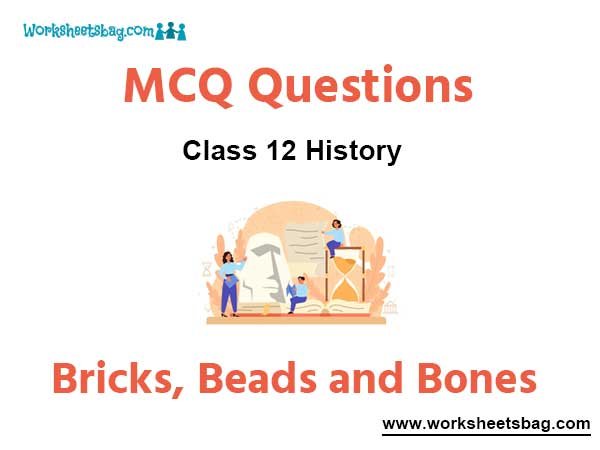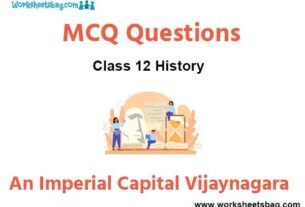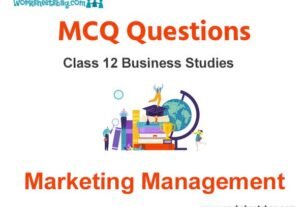Please refer to Bricks, Beads and Bones MCQ Questions Class 12 History below. These MCQ questions for Class 12 History with answers have been designed as per the latest NCERT, CBSE books, and syllabus issued for the current academic year. These objective questions for Bricks, Beads and Bones will help you to prepare for the exams and get more marks.
Bricks, Beads and Bones MCQ Questions Class 12 History
Please see solved MCQ Questions for Bricks, Beads and Bones in Class 12 History. All questions and answers have been prepared by expert faculty of standard 12 based on the latest examination guidelines.
MCQ Questions Class 12 History Bricks, Beads and Bones
Question. The bones of which of these animals have been found at Harappan sites?
(A) Lion
(B) Pig
(C) Deer
(D) Both (B) and (C)
Answer
D
Question. Which one of the following was used most likely for harvesting during Harappan Civilization?
(A) Stone blades
(B) Tractors
(C) Cattle
(D) Agriculture was not practiced during the Harappan civilization
Answer
A
Question Which of these was a luxury object?
(A) Sickle
(B) Queen stones
(C) Pots of Faience
(D) All of the above.
Answer
C
Question. Which among the following is not a notable artefact found in Mohenjodaro site?
(A) Dancing Girl
(B) Dockyard
(C) Pashupati-seal
(D) Priest-King
Answer
B
Question. Which of the following was a part of Harappan people’s diet?
(A) Millets
(B) Animal Products
(C) Mango seeds
(D) Both (A) and (B)
Answer
D
Question. Which of the following Harappan civilisation sites are presently outside India?
(1) Kalibangan
(2) Shortugai
(3) Chanhudaro
(4) Lothal
(A) 1 and 2
(B) 2 and 3
(C) 3 and 4
(D) 1 and d
Answer
B
Question. Assertion (A): Terracotta model of a ship was found at Lothal indicating that external trade was carried using ships and boats.
Reason(R): Small and heavy weights plus metal scale pans had been found.
(A) Both A and R are true and R is the correctexplanation of A.
(B) Both A and R are true but R is NOT the correct explanation of A.
(C) A is true but R is false.
(D) A is false and R is true.
Answer
B
Question. Assertion (A): Archaeological finds suggest that copper was probably brought from Oman, on the south- eastern tip of the Arabian peninsula to make vessels.
Reason (R): Chemical analyses have shown that both the Omani copper and Harappan artefacts have traces of nickel, suggesting a common origin.
(A) Both A and R are true and R is the correctexplanation of A.
(B) Both A and R are true but R is NOT the correct explanation of A.
(C) A is true but R is false.
(D) A is false and R is true.
Answer
A
Question. Assertion (A): Seals and sealings were used to facilitate long-distance communication.
Reason (R): The sealing also conveyed the identity of the sender.
(A) Both A and R are true and R is the correctexplanation of A.
(B) Both A and R are true but R is NOT the correct explanation of A.
(C) A is true but R is false.
(D) A is false and R is true.
Answer
B
Question. Assertion (A): Expeditions to areas such as the Khetri region of Rajasthan and south India established communication with local communities.
Reason (R): Harrapan artefacts such as steatite micro beads in these areas are indications of such contact.
(A) Both A and R are true and R is the correctexplanation of A.
(B) Both A and R are true but R is NOT the correct explanation of A.
(C) A is true but R is false.
(D) A is false and R is true.
Answer
A


